Whether you’re just getting started in the sport or you’re a seasoned pro, spinning gear has something to offer. These rods and reels are not only easier to use than baitcasting tackle, they are also much more capable with finesse baits and lighter lines. On the off chance that you’re unfamiliar with this gear, we’re going to teach you how to cast a spinning reel.

HOW TO CAST A SPINNING REEL
Spinning reels are great because they are so easy to use. The mechanics of casting will still take a little getting used to, you’ll have to get the hang of doing multiple things at the same time. However, once you get the muscle memory going, casting a spinning reel becomes second nature pretty quickly.
Here’s a step-by-step guide on how to make a simple cast with a spinning reel:
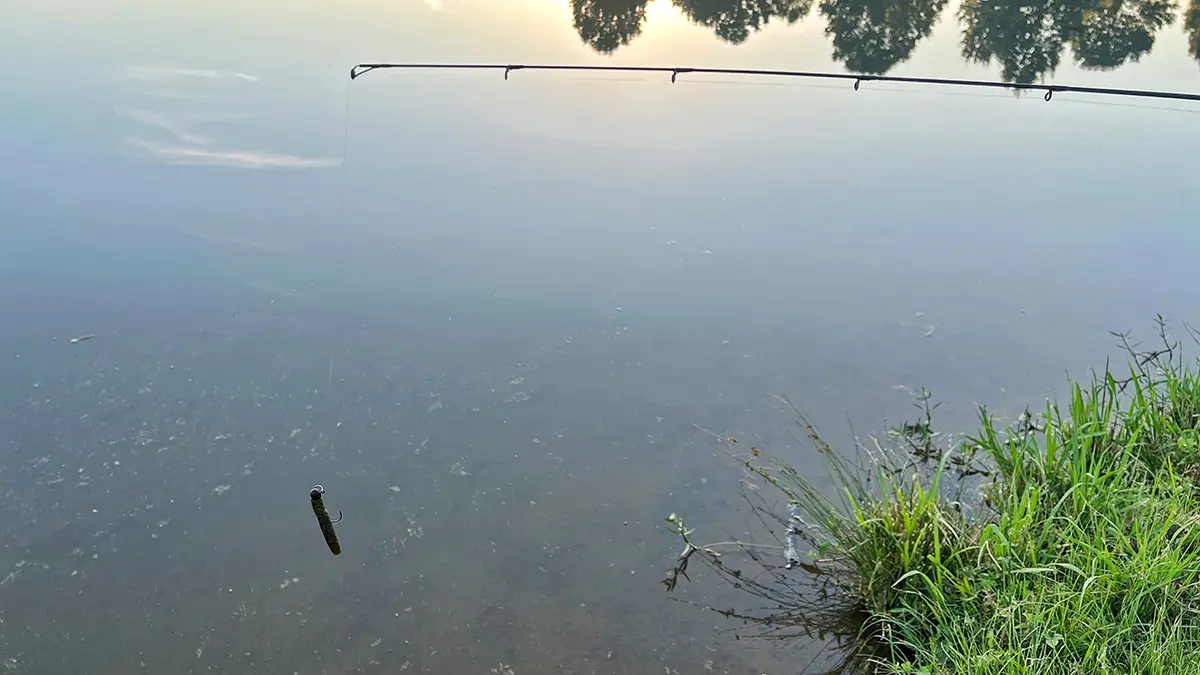
Step 1: Leave a little line out
For starters, you’ll want to reel your bait up towards your rod tip until there’s about a foot of line left between your bait and the tip of your rod.
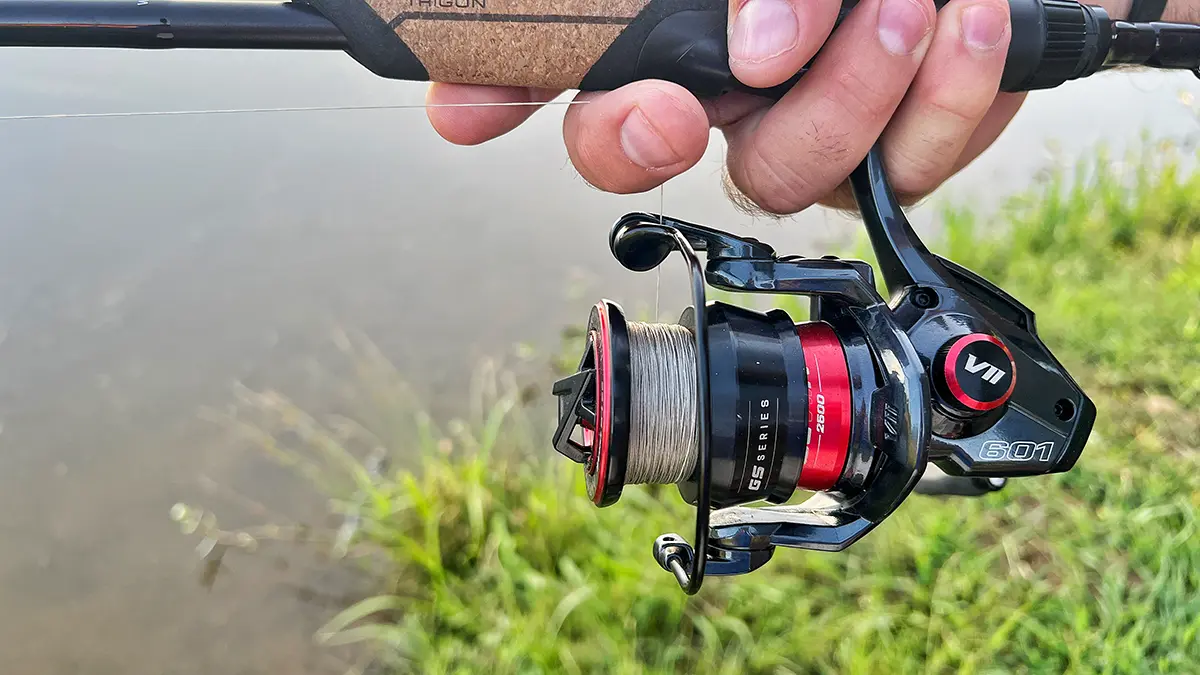
Step 2: Rotate the bail and grip the line
Now, turn the reel’s handle to rotate the bail, which is the metal wire that captures the line. You want the bail’s roller, the round groove that holds the line, to be closest to the rod. Now, extend either the index or middle finger of the hand that is holding the rod so that you can pull your line over the roller and towards the rod.
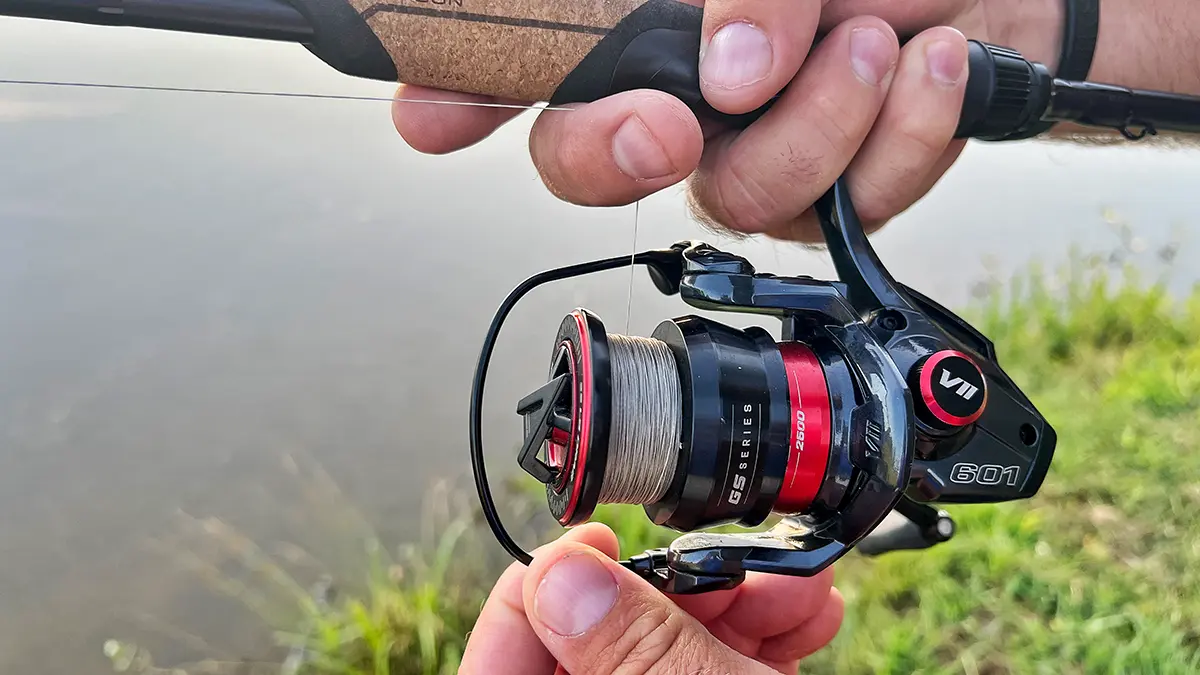
Step 3: Open the bail
With the line secured in the crease of your bent finger, open the bail with your other hand by flipping it up.

Step 4: Bring the rod back
While still holding the line in your finger, bring the rod tip up over your head and behind you.

Step 5: Send the bait and rod forward
In one fluid motion, bring the rod forward quickly while simultaneously straightening your finger to release the line. You’ll want to release the line when the rod is at about the 10 o’clock position (as the cast would be viewed by an onlooker from your left).

Step 6: Lower your rod
As the bait sails through the air, continue to lower your rod slowly to reduce the drag of the line across the guides. You’ll want to end your cast with your rod tip pointed at the target you were throwing towards.
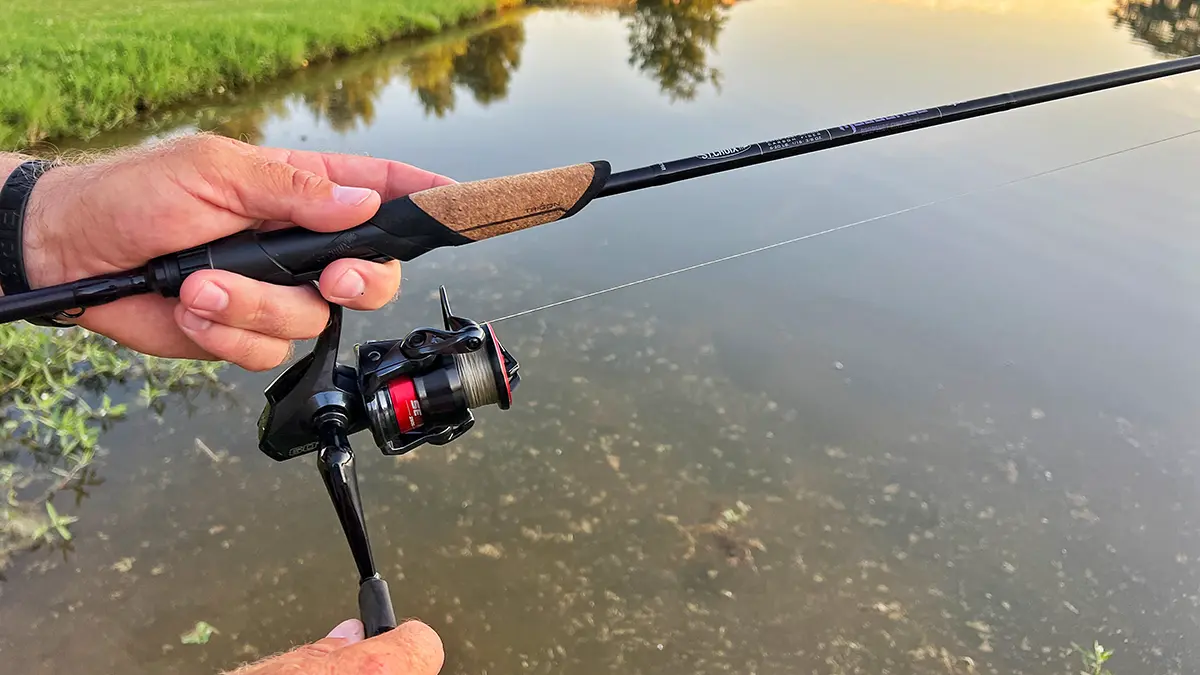
Step 7: Begin reeling
Once the bait lands on the water, engage your reel by flipping the bail back into its original position, and then begin reeling.
ADVANCED TECHNIQUES
Once you’ve got the basics down, you can move on to more sophisticated tactics. One reason more advanced anglers still use spinning reels is because these reels are much easier to skip baits with—especially light baits like wacky-rigged worms.

How to Skip a Bait With a Spinning Reel
To skip a bait, you’ll want to repeat steps 1 through 3. Instead of bringing the rod tip up over your head and behind you, you’ll want to bring it to the side. Then, as you bring your rod forward, lower the tip so that your bait is near the water at the moment you release the line from your finger.
You want the rod to follow a similar motion as skipping a rock across a lake. Get your bait close to the surface and moving at a high rate of speed, so that it will skip smoothly with minimal resistance from the water.
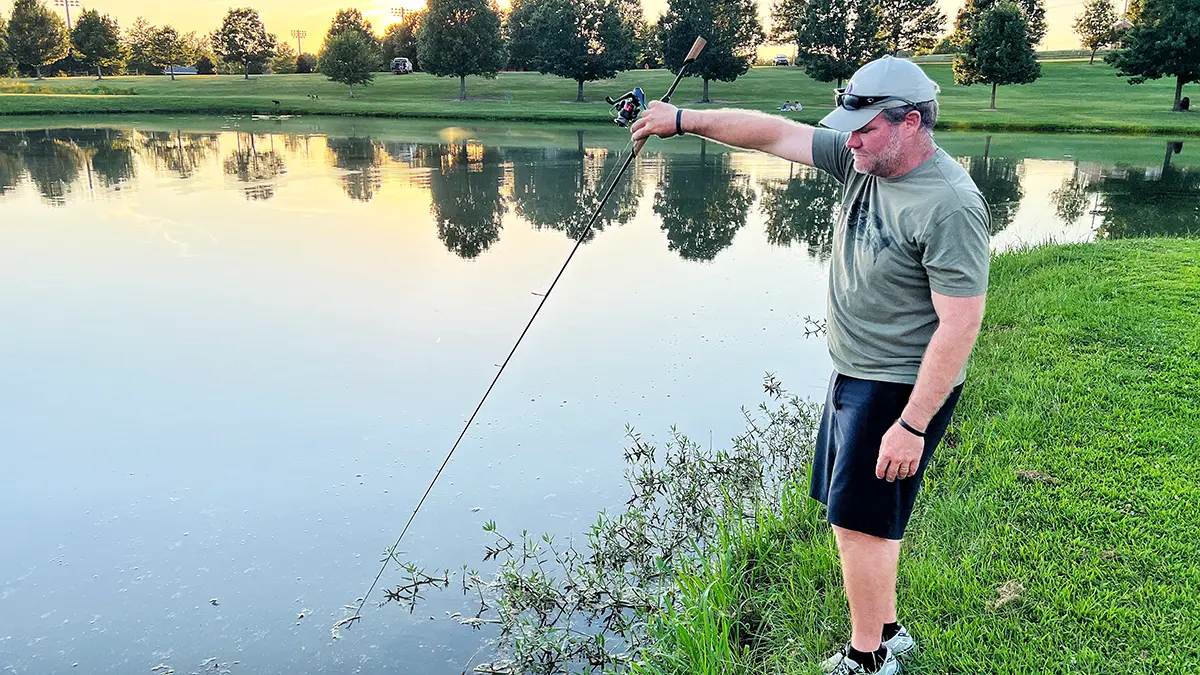
How to Drop a Bait With a Spinning Reel
Spinning reels are great for drop shotting because the line peels off without the spool having to turn. This makes spinning reels much better for vertical fishing with light baits than baitcasters, which have spools that need to rotate in order to release the line.
However, dropping a bait effectively isn’t as simple as just flipping the bail open and letting the bait fall. Yes, you can drop the bait this way but the bait will fall much faster and straighter if you minimize the resistance on the line.
The main cause of resistance when dropping a bait occurs as the line passes through the rod guides. To alleviate this, hold your rod vertically as you drop your bait, with the butt of the rod in the air and the tip down near the water. This way, the line can fly off the spool and flow straight through the eyes with minimal contact.
AVOIDING ISSUES
Though they are very user-friendly, spinning reels do come with their own set of challenges. Spooling a spinning reel can be a little tricky, but we have a great step-by-step article to help with that. Additionally, you’ll need to know a few things about dialing in the drag as well as adjusting it during the fight.
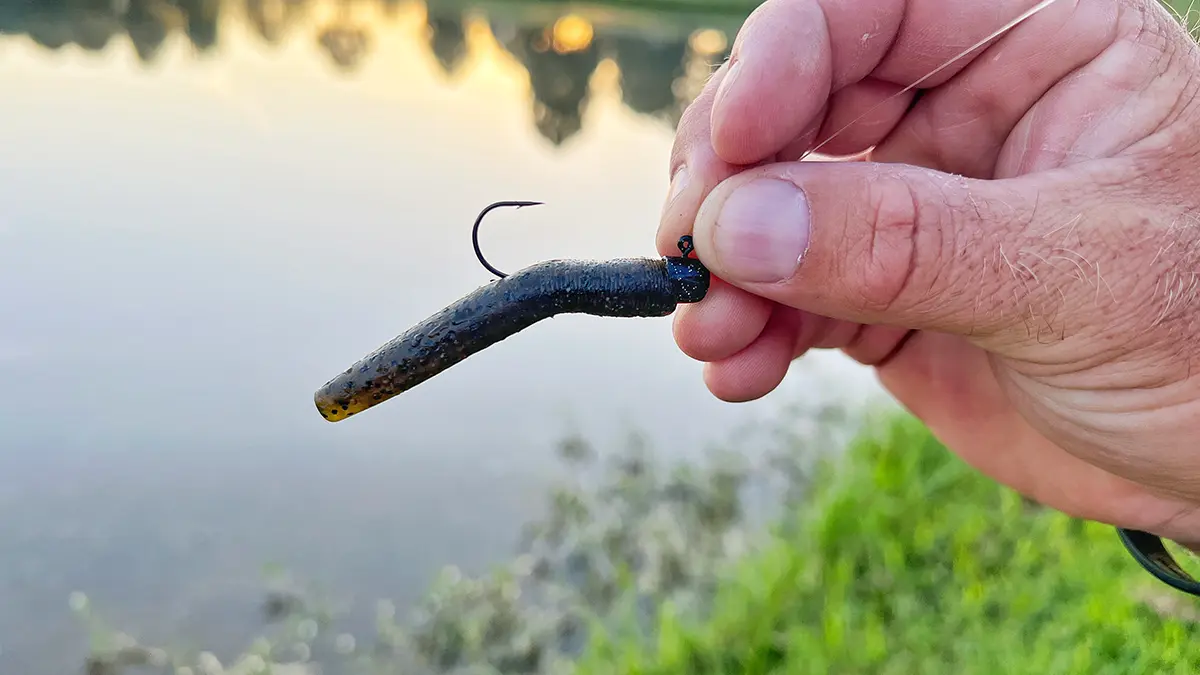
Avoiding Line Twist
Line twist is the most frustrating thing to deal with when casting spinning gear. Again, you’ll want to be careful when spooling up so that you don’t have issues with this right away. Even if spooled perfectly, line twists can still easily develop.
One cause of line twist is the bait spinning while it’s in the air. Casting lures like Ned rigs, especially into the wind, can result in baits gyrating wildly while flying through the air. If this happens for just a few casts in a row, you’ll quickly start noticing that your line tangles up as soon as there’s any slack in it. This can, and inevitably will, cause major issues when casting or fighting a fish.
To lessen the chance of your bait spinning, try not to cast into the wind. It’s also often helpful to make more forceful casts, at more of a sidearm angle. There are also several hard bait manufactures that add weight transfer systems to their baits, which orients them tail first on the cast and make them more aerodynamic. Lastly, be sure your soft plastic baits are rigged well and straight; this will help minimize their spin in the air as well.
You’ll also want to be cognizant of what your bait is doing in the water during the retrieve, since line twist can develop here as well. Again, something as simple as a poorly aligned Ned rig can lead to the bait spinning while it’s being reeled through the water. After just a few casts and retrieves with a poorly rigged bait, you’ll begin to see line twists develop and then you’re on your way to bigger issues.
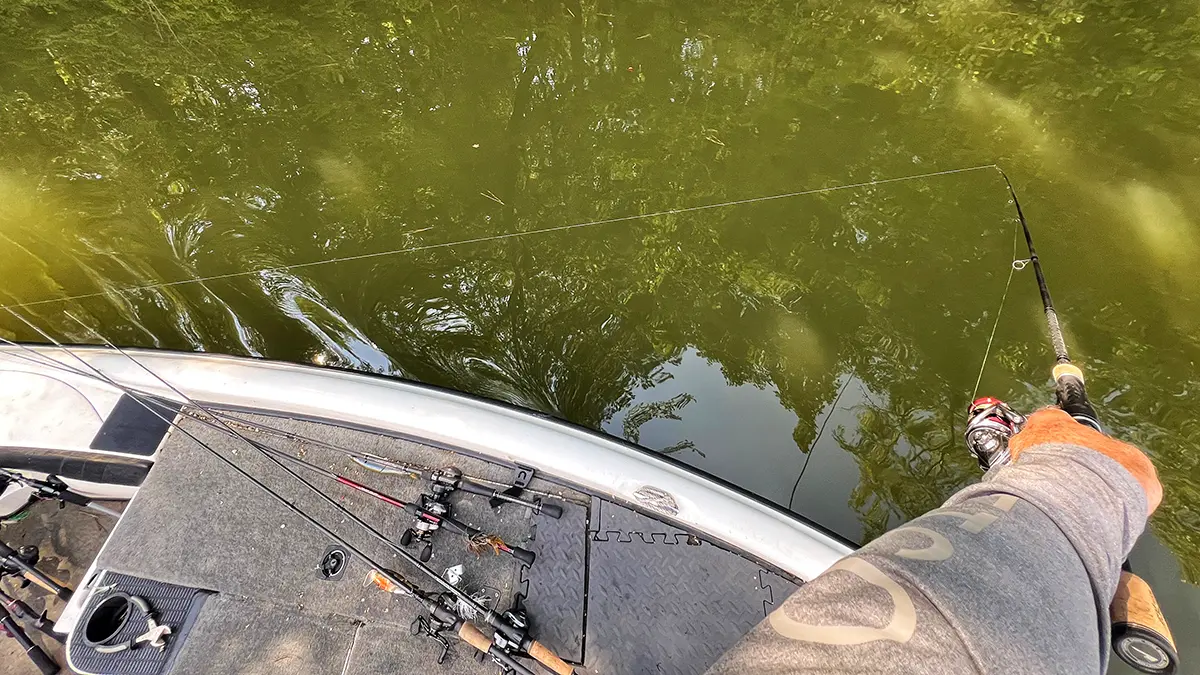
Dealing with Line Twist
If you’re in a boat, one of the best ways to remove line twist is to simply cut your bait off and then trail your line behind your boat. You can do this by either putting your trolling motor on high or by idling with your big motor. Hold your rod tip down near the water, flip the bail and allow the passing water to pull the line off the spool slowly.
Once you have a significant amount of line trailing the boat—more than a good cast’s worth—flip the bail to engage your reel and begin reeling in your line while still allowing the passing water to keep tension on the line. As the end of your line nears the boat, the resistance from the water will diminish and you’ll need to apply tension to the line above your reel with the hand that is holding the rod. This process will remove the line twists from your line.
If you’re fishing from the bank, or from a boat that doesn’t have a sufficient propulsion system to implement the previous method of removing line twists, there are other possible remedies. You can try to eliminate some of the line twists by flinging your line back and forth overhead, similar to what you’d see a fly fisherman do.
To do this, cut your bait off. Make sure there are no obstructions overhead and then begin letting line out little by little while bringing the rod tip back and forth quickly overhead. This is a much more complicated practice, but it will help get rid of some of the line twist, especially if you do this as soon as you start to notice them developing.
You can also use a line conditioner. Adding a ball bearing swivel between your bait and your mainline can help as well. Line twists are much less of a problem when using braided line as opposed to monofilament and fluorocarbon. Using a braided main line and then adding a short fluoro or mono leader can help too.
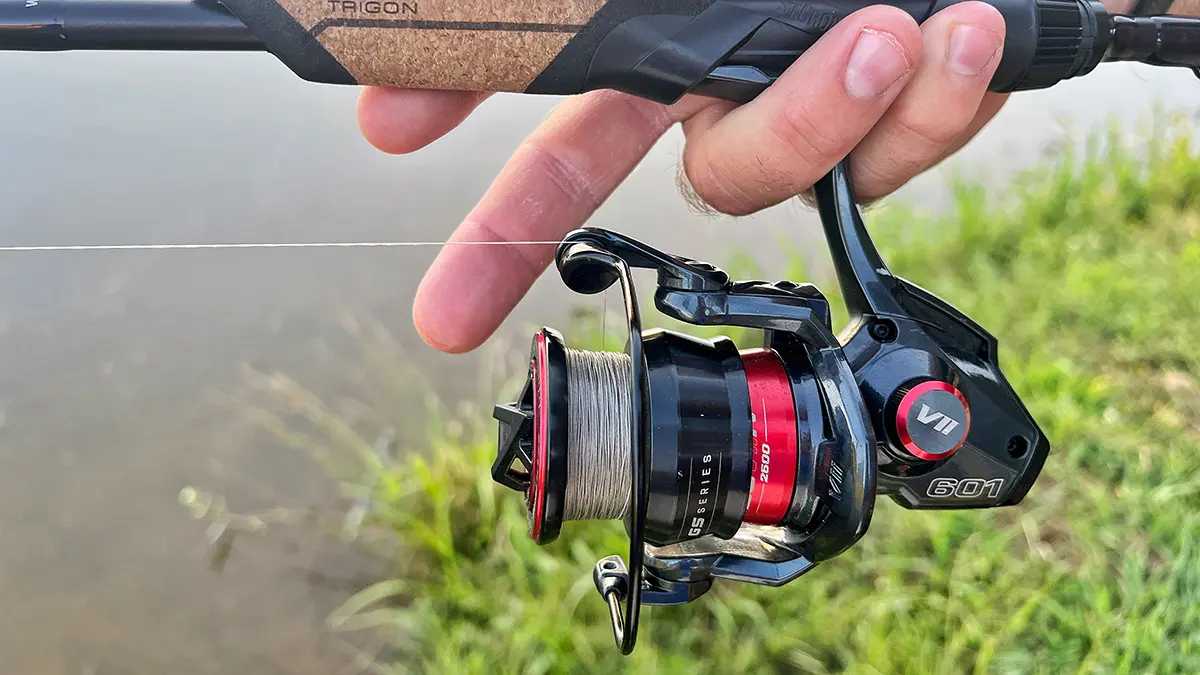
IN CONCLUSION
Making a simple cast with a spinning reel is something anyone can do with a little practice. More advanced casts, like those needed to skip a bait, will take a little more time to master. Kep in mind that eliminating as much resistance as possible is key when using spinning gear to fish vertically.
You’ll also need to know how to spool a spinning reel properly to make sure that you’re set up for success when you start to cast it. Avoiding line twists at all costs is a big part of it too. If you can learn to do these things well over time, you’ll find that spinning gear is very easy to use and far more capable with certain techniques.
Products used in this piece:
St. Croix Mojo Bass Trigon Spinning Rods
SEVIIN GS Series Spinning Reel












